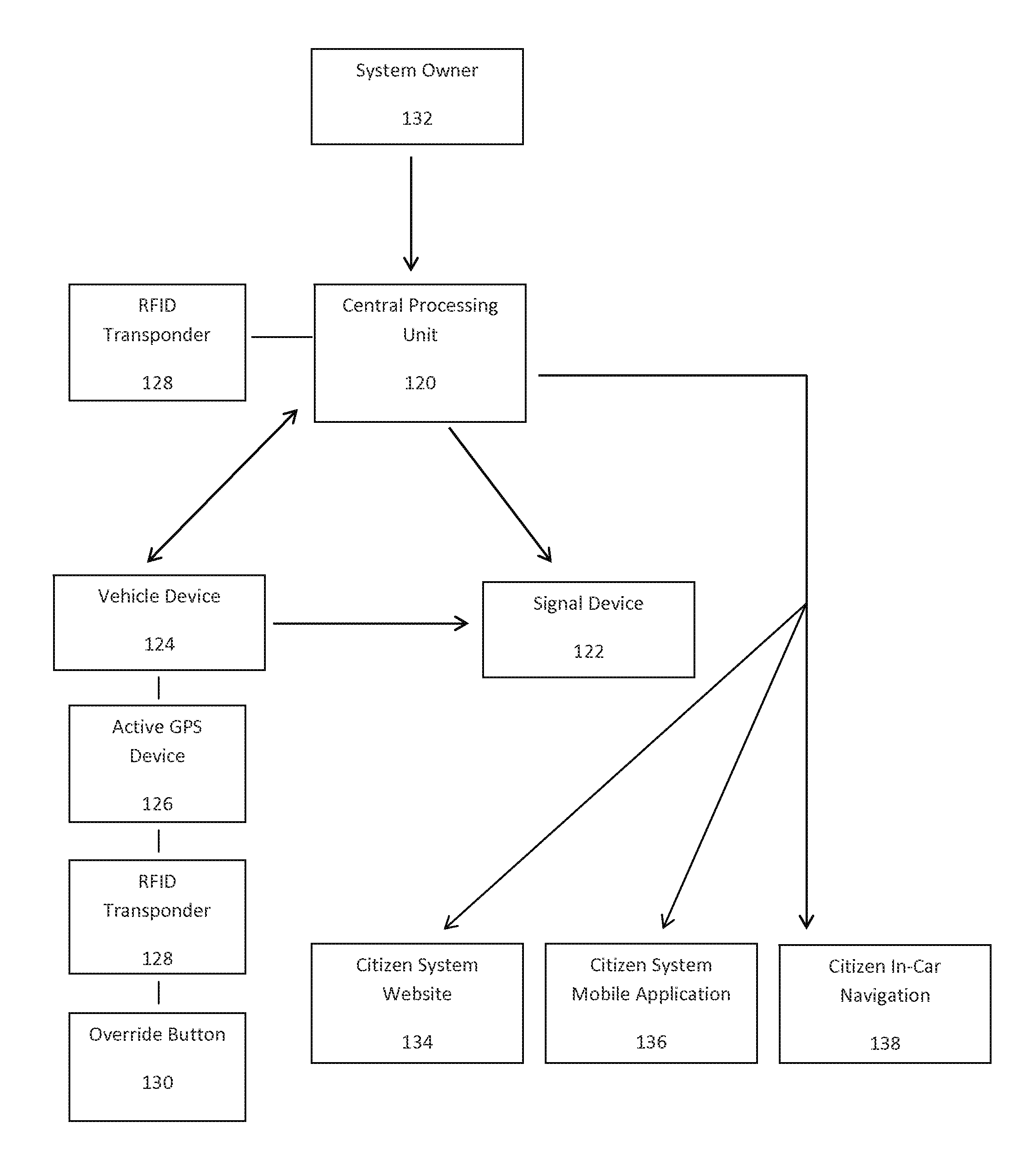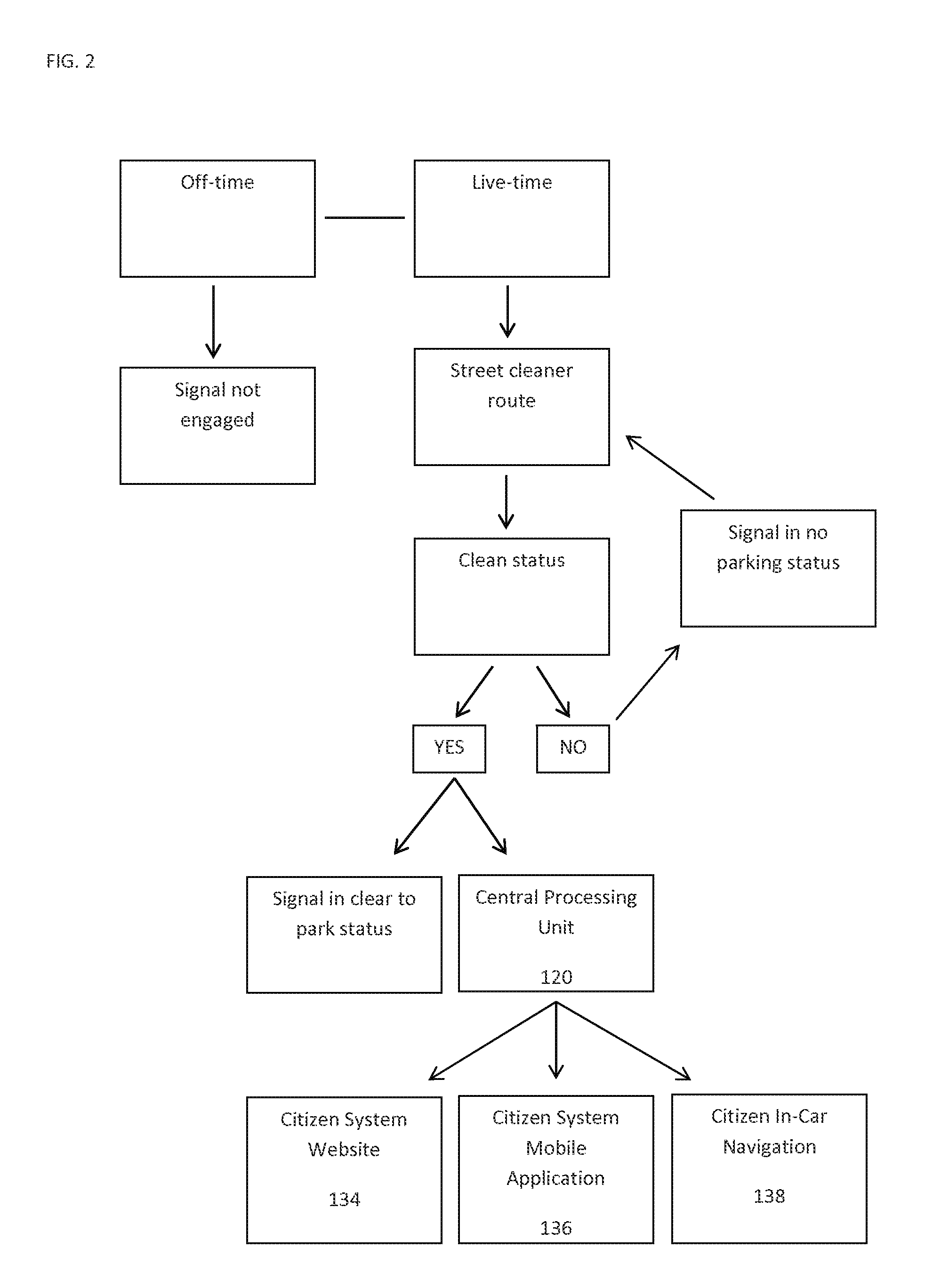Parking management system related to street cleaning
a technology for street cleaning and parking management, applied in the field of street cleaning, can solve the problems of affecting the public parking, affecting both municipalities, and affecting the use of public parking, and the method is limited to paid parking areas
- Summary
- Abstract
- Description
- Claims
- Application Information
AI Technical Summary
Benefits of technology
Problems solved by technology
Method used
Image
Examples
first embodiment
FIG. 1—First Embodiment
[0032]One embodiment of the system is illustrated in FIG. 1.
[0033]The central processing unit 120 will act and operate as the central piece between all communications throughout the system. The central processing unit 120 will both send and receive information. The central processing unit 120 will contain a radio frequency identification transponder 128, herein referred to as a RFID transponder.
[0034]A plurality of vehicle devices 124, each with its own unique identification, which will be herein be referred to as the vehicle ID, will send and receive information. A vehicle device 124 will be contained within a plurality of street cleaners 600, one for each street cleaner 600. The vehicle device 124 will contain an active GPS device 126 as well as an onboard RFID transponder 128.
[0035]A plurality of signal devices 122 will be positioned along a plurality of streets 500 in a distance that is visible from a corresponding regulation sign 400 along each street 500...
PUM
 Login to View More
Login to View More Abstract
Description
Claims
Application Information
 Login to View More
Login to View More - R&D Engineer
- R&D Manager
- IP Professional
- Industry Leading Data Capabilities
- Powerful AI technology
- Patent DNA Extraction
Browse by: Latest US Patents, China's latest patents, Technical Efficacy Thesaurus, Application Domain, Technology Topic, Popular Technical Reports.
© 2024 PatSnap. All rights reserved.Legal|Privacy policy|Modern Slavery Act Transparency Statement|Sitemap|About US| Contact US: help@patsnap.com










